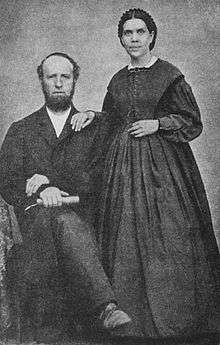Solusi University
 | |
Former names | Solusi College (1894–1990) |
|---|---|
| Motto | We serve |
| Type | Private |
| Established | 1894 |
| Affiliation | Seventh-day Adventist Church |
| President | Joel Musvosvi |
Administrative staff | 221 |
| Undergraduates | 4,000+ |
| Postgraduates | 518+ |
| Location | Bulawayo, Zimbabwe |
| Campus | Rural, 12,000 acres (49 km2) |
| Colors | Burnt orange and white |
| Website |
solusi |
| Part of a series on |
| Seventh-day Adventist Church |
|---|
 |
|
Adventism Seventh-day Adventist portal |
Solusi University is a coeducational private university in Bulawayo, Zimbabwe. Initially established in 1894, the institution received the authorisation of the Government of the Republic of Zimbabwe through an act of Parliament to operate as a university in 1994.[1]As a university it first opened on 4 October 1994, the first private institution of higher education in the country. Following the granting of the charter by the Government it was renamed Solusi University. The university follows American grading and business, research and liberal arts curricular patterns.[2] It is owned and run by the Seventh-day Adventist Church and is part of the Seventh-day Adventist education system, the world's second largest Christian school system.[3][4][5] [6]
History
Solusi University was founded in 1894 as one of the first of hundreds of Seventh-day Adventist mission stations. It was named after Chief Soluswe, the leader whose lands were taken by the colonial settlers led by Cecil John Rhodes.
Campus
Solusi University is located approximately 30 miles (50 km) southwest of the city of Bulawayo on approximately 12,000 acres (49 km²) of land adjacent to the Shelmar Dairy farm and 60 miles away from the town of Plumtree. Figtree is 35 miles away; because of the rural nature of the campus, almost the entire Solusi faculty members and student body reside on campus.
The 12,000-acre (49 km2) campus was originally designated as a farm which was later granted to the Adventist missionaries in the late 1890s by Cecil John Rhodes The campus maintains a variety of indigenous trees, especially around the quad in the center of the campus. The campus is composed of 8 instructional buildings, the Student Center, two single-sex residence halls and 10 complexes.
The four student hostels on campus are Palmer Hall, Morning Side and Sweden Hall, the women's hall, Ralley Hall, the undergraduate men's hall, and the Married Students qutaers, primarily for men who are married, graduate or seminary students. The residence halls strictly enforce a curfew depending on a student's age, as well as a visitation policy which does not allow students of the opposite sex in dorm rooms at any time. Students living on-campus are also required to attend a number of worship services.
As of 2006, the University has an enrolment of over 4000 students from over 16 countries around the world.
 The Kamushinda Square.
The Kamushinda Square. An aerial photograph of Solusi University
An aerial photograph of Solusi University The Beit Hall.
The Beit Hall.
Academic divisions
The university is made up of five schools/colleges, offering 60 undergraduate majors and 10 graduate majors: the Faculty of Theology, the Faculty of Business, the Faculty of Science & Technology, the Faculty of Arts and the Faculty of Education.[7]
Faculty of Business
The Faculty of Business first began to offer graduate education in business in 1994. It offers Bachelor of Business Administration, Master of Science in Administration and Master of Business Administration degrees. The school is a member of the Zimbabwe Association of Accounting Technicians. It includes the following departments: Department of Management & Marketing Department of Finance Department of Accounting Department of Computer & Management Information Systems
Faculty of Science & Technology
The Faculty of Science and Technology offers 16 undergraduate degrees and one graduate program to more than 2,500 students, employing over 230 faculty. It includes the following departments:
- Department of Agriculture & Agribusiness
- Department of Mathematics
- Department of Environmental Sciences
- Department of Family and Consumer Science
Faculty of Theology
- Department of Graduate Programmes (Theology)
- Department of Theology & Religious Studies
Faculty of Arts & Education
- Department of Fine Arts
- Department of Humanities
- Department of Languages & Communication
The university has a total of 178 faculty members and a student-faculty ratio of 7:1.
Diversity
The international population includes 885 students representing 7 countries. First in the nation for largest proportion of international students, and 1st in the nation for campus diversity.
Notable alumni
- Professor Levi Nyagura – Vice-Chancellor of University of Zimbabwe
See also
- List of Seventh-day Adventist colleges and universities
- Seventh-day Adventist education
- Seventh-day Adventist Church
- Seventh-day Adventist theology
- History of the Seventh-day Adventist Church
- Adventist Colleges and Universities
References
- ↑ Adventist University in Africa : Solusi University
- ↑ Education in Zimbabwe :: Solusi University
- ↑ http://www.csmonitor.com/Commentary/Opinion/2010/1115/For-real-education-reform-take-a-cue-from-the-Adventists "the second largest Christian school system in the world has been steadily outperforming the national average – across all demographics."
- ↑ http://www.religionfacts.com/christianity/denominations/seventh_day_adventist.htm
- ↑ "Department of Education, Seventh-day Adventist Church". Retrieved 2010-06-18.
- ↑ Rogers, Wendi; Kellner, Mark A. (April 1, 2003). "World Church: A Closer Look at Higher Education". Adventist News Network. Retrieved 2010-06-19.
- ↑ Academic Faculties, Solusi University
External links
Coordinates: 20°12′02″S 28°09′28″E / 20.200599°S 28.157816°E